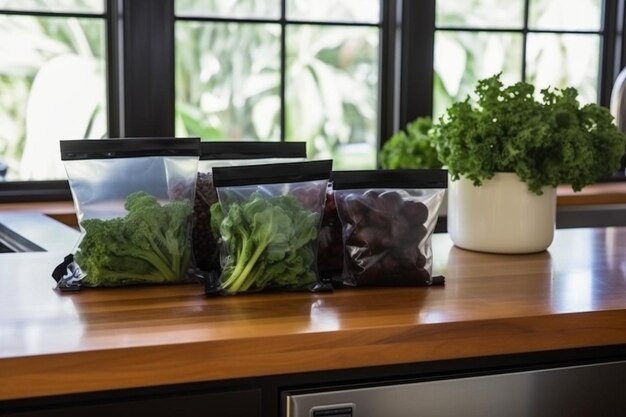How to Keep Dill Fresh: Storage Tips and Shelf Life Explained 🌿
The verdant, feathery fronds of dill aren't just visually striking—they're also the unsung heroes of many culinary masterpieces, imparting a unique, delicate flavor that can elevate everyday dishes to gourmet heights. Whether you’re a seasoned home cook or a culinary novice dipping your toes into the world of fresh herbs, understanding how to store dill properly can dramatically impact its freshness and utility. So, how long will dill last in the refrigerator, and what can you do to make the most of its shelf life? Let’s dive deep into the art and science of keeping this aromatic herb as fresh as the day it was picked.
🌱 The Lifespan of Dill in the Refrigerator
Understanding Dill’s Shelf Life
In its natural form, dill can begin to wilt or lose its punch sooner than expected if not correctly stored. Generally, fresh dill can last approximately 7 to 10 days in the refrigerator when stored properly. However, environmental factors, such as moisture and temperature, can influence this timeframe. Exposure to too much moisture can encourage mold growth, while inadequate coolness can speed up wilting.
Ideal Storage Conditions
To maintain its freshness, dill craves a cool, dry, and low-light environment. A refrigerator crisper drawer is typically an herb-friendly zone, being humid enough to prevent drying without becoming excessively damp. Keeping these factors in balance is key to prolonging dill's freshness.
🥕 Best Practices for Storing Fresh Dill
The Damp Paper Towel Trick
One of the simplest and most effective ways to store fresh dill is by using a damp paper towel. Here’s a step-by-step guide:
- Rinse the dill gently under cool water to remove any soil or pesticides.
- Shake off excess water, but don’t dry it completely.
- Wrap the dill loosely in a damp (not wet) paper towel.
- Place it inside a plastic bag or an airtight container with some holes to allow airflow.
- Store it in the refrigerator, preferably in the crisper drawer.
Using a Herb Keeper or Jar
If you want to go a step further, a herb keeper can be a worthy investment:
- Trim the stems of the dill to about an inch or so.
- Place the stems upright in a jar filled with an inch of water.
- Cover the jar loosely with a plastic bag to create a mini-greenhouse effect.
- Change the water every two or three days to prevent bacterial growth and extend the herb’s freshness.
🍃 Freezing Dill for Extended Shelf Life
Freezing Fresh Dill
If you find yourself with an abundance of dill or simply want to extend its usability beyond the refrigerator’s limits, freezing is an excellent option:
- Chop the dill into small, manageable pieces.
- Place the dill pieces in an ice cube tray, filling each slot halfway.
- Top with water or olive oil to preserve flavor and texture better than freezing alone.
- Freeze until solid, then transfer the dill cubes to a ziplock bag for easy access.
Benefits and Considerations
Freezing dill is particularly effective because it locks in flavor for about 4 to 6 months. While frozen dill may not retain the same spring-like texture as the fresh herb, it still offers robust flavor that’s perfect for stews, soups, and sauces.
🧄 Complementary Herbs and Their Shelf Lives
Exploring how dill’s shelf life compares with other popular herbs can lend useful insights into culinary pantry management:
- Parsley: Typically lasts around 10 to 14 days with proper storage.
- Cilantro: Stays fresh for approximately 7 to 10 days when stored correctly.
- Thyme: Known for lasting 10 to 14 days due to its hardy nature.
Dill stands shoulder to shoulder with these kitchen staples when it comes to its frail nature, requiring thoughtful storage for maximum longevity.
🥗 Culinary Uses and Pairings for Dill
Dill’s bright, tangy notes make it an excellent companion to a range of foods:
- Seafood Dishes: Dill complements fish, especially salmon, beautifully.
- Pickling: Its savory edge lends a nice bite to homemade pickles.
- Salads and Dressings: A dash of dill can elevate a summer salad or dressing.
- Sauces and Dips: Perfect for creamy sauces such as tzatziki or dill dip.
🌟 Handy Storage Summary
Here's a quick, skimmable summary to ensure your dill stays as fresh as possible:
- 💧 Keep it Moist, Not Wet: Opt for damp, not drenched, paper towels.
- 👜 Use Airtight Containers: Preserve dill in containers that allow slight airflow.
- 📦 Consider Freezing: Preserve dill flavor by freezing it in water/oil cubes.
- 🥫 Opt for a Herb Keeper: Invest in a herb keeper for the best results.
- ♻️ Refresh Every Week: Use dill within a week for peak freshness.
🌿 Final Insights
Preserving dill’s flavor, freshness, and full aromatic potential is a simple yet rewarding endeavor. Whether you rely on these fridge tactics or embrace freezing for a future culinary experience, knowing how to keep your dill fresh not only saves money but enhances your culinary creations. By storing dill properly, you’re opting for maximum taste and sustainability in the kitchen. Now, with these insights at your disposal, you’re better prepared to make the most of your culinary adventures, one herb at a time!
